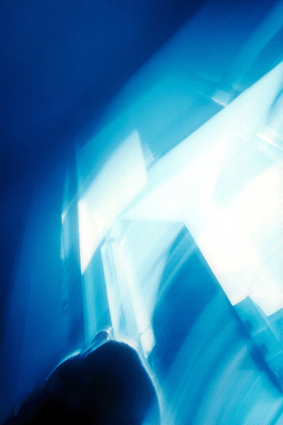
Rosetta Messori was born in Modena. She lives and works in Rome.
She became involved with photography through her work as a set photographer on numerous film sets, alongside famous Italian directors such as, among others, Giuseppe Bertolucci, Peter Del Monte, Cristina Comencini, Giuseppe Ferrara and Pasquale Squitieri. She worked with the FAO on a series of projects to document and report on the Mediterranean area and the Middle East. Subsequently she carried out numerous photo reportages for publishing houses, tourism agencies and embassies, publishing the photography book Sana – Voci della capitale dello Yemen for publishers Palombi.
In parallel she developed her own personal artistic research on the relationship between Space, Time and Energy (understood as the Fourth Dimension), always conducted through the medium of analogue photography. She has investigated the multiple possibilities of visual language, attending the photography courses of Victor Ugo Contino at the Academy of Fine Arts in Rome and subsequently frequenting various courses at the ICP in New York, visiting galleries and studios of stablished artists such as Ralph Gibson during her semester in the USA. Thus this US experience in 1989 inaugurated her exhibition work, which has led her to present her works in both public and private spaces in Italy and abroad.
First and foremost I have always been driven to discover the very core attributes of people and places; in this way my imagination can capture their essence. From the first I searched to show the dimension of personality, magnetism and spirit rather than their faces.
Naturally, to achieve the above, using the lens’s inherently objective view to portray that which is real , necessitated my combining the view seen through the lens with my perception of the subjects’ emotions.
And I had to go beyond the immediate: my photographs are not taken in ‘photographic time’ but in a time of sensation or emotion: like the beat of a heart or the second between breathing in and out.
Seeking these vibrations in people and scenery required particular attention to light; light which can blind the eye at times, but can also enlighten. Almost all my subjects are shot against the light, so that the subject himself is less important than the contours of his shadow floating in space and music, as though lovingly embraced for a perfect moment
How to challenge the realistic portrayal of everyday life? By gaining a state of mind free from any constrictive judgement or conditioning. By not gazing at the flowing river from its banks, but by making myself part of it. By recognising the energy imprisoned in the material: following its trajectory until it turns in on itself and flows to join its source material and give it feeling and form. Circles of space and time: generating the continuation and rhythm which is harmony.
As Anton Giulio Bragaglia says in ‘Futurist Photodynamism’: ‘movement is not the same as animation because with the former a brief sensation of motion is experienced or there is bodily disintegration within the frame. With the latter there is an impression of dematerialisation: there are lingering traces of recent movement, with the contours remaining clear. So there, where a photo seems most in movement and there is so little animation that it serves for nothing, is where photodynamism occurs, which gives scope to create a dynamic sensation of motion with the shape still true even as it dematerialises.’
Instead of a linear succession of instants, one perceives an infinite present, one forgets to think of time and is absorbed into the being of the subject observed.
One finds oneself in a place where there are no thoughts of present, past and future as these have been reduced to a single fraction of time where life vibrates in the true sense.
Divisions between mind and body, subject and object, fade away leaving one connected to each object viewed as though one had experienced it.
Even landscapes can be seen from a personal ‘mind’s eye’ as well as ‘part of a map’, and make the cyclical journey from reality to individual perception of the reality, to the amalgum of the two in photography and art.